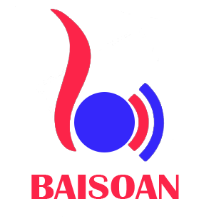In the world of finance, economics, and global markets, the term RUB ranking often comes up in discussions about currency performance, economic stability, and investment potential. RUB, the currency code for the Russian Ruble, is a key player in the global economy, and its ranking provides valuable insights into the economic health of Russia and its position in the international market. This article delves into what RUB ranking is, how it is determined, and why it matters.
What is RUB Ranking?
RUB ranking refers to the position of the Russian Ruble relative to other global currencies in terms of strength, stability, and performance. This ranking is influenced by a variety of factors, including economic indicators, geopolitical events, and market sentiment. The ranking can fluctuate based on Russia’s economic policies, global oil prices (since Russia is a major oil exporter), and international trade dynamics.
Factors Influencing RUB Ranking
- Oil Prices
The Russian economy is heavily dependent on oil and gas exports. As a result, the Ruble’s value is closely tied to global oil prices. When oil prices rise, the Ruble tends to strengthen, improving its ranking. Conversely, a drop in oil prices can weaken the Ruble. - Economic Policies
The Central Bank of Russia plays a significant role in determining the Ruble’s value through monetary policies such as interest rate adjustments and foreign exchange interventions. Stable and transparent policies often lead to a stronger Ruble ranking. - Geopolitical Events
Sanctions, political tensions, and international conflicts can significantly impact the Ruble’s ranking. For example, economic sanctions imposed on Russia by Western countries have historically led to a decline in the Ruble’s value. - Inflation and Economic Growth
High inflation rates can erode the Ruble’s purchasing power, negatively affecting its ranking. On the other hand, strong economic growth and low inflation can boost the Ruble’s position. - Global Market Sentiment
Investor confidence and risk appetite also play a role. During times of global uncertainty, investors may flock to safer currencies, causing the Ruble to drop in ranking.
How is RUB Ranking Measured?
RUB ranking is typically measured using the following metrics:
- Exchange Rates: The Ruble’s value against major currencies like the US Dollar (USD), Euro (EUR), and Chinese Yuan (CNY) is a key indicator.
- Trade-Weighted Index: This measures the Ruble’s strength against a basket of currencies of Russia’s major trading partners.
- Foreign Exchange Reserves: The amount of foreign currency held by the Central Bank of Russia can influence the Ruble’s stability and ranking.
- Economic Indicators: Metrics such as GDP growth, inflation rates, and balance of payments are used to assess the Ruble’s performance.
Why Does RUB Ranking Matter?
- For Investors
A strong RUB ranking can attract foreign investment, as it signals economic stability and growth potential. Conversely, a weak Ruble may deter investors but could also present buying opportunities for those willing to take on risk. - For Trade
The Ruble’s ranking affects the cost of imports and exports. A stronger Ruble makes imports cheaper but can make Russian exports less competitive globally. - For the Russian Economy
A stable and high-ranking Ruble boosts consumer confidence, reduces inflation, and supports economic growth. It also enhances Russia’s standing in the global economy. - For Global Markets
As one of the world’s largest economies and a major energy exporter, Russia’s currency ranking has ripple effects on global markets, particularly in emerging economies and energy-dependent nations.
Recent Trends in RUB Ranking
In recent years, the Ruble has experienced significant volatility due to a combination of factors, including fluctuating oil prices, geopolitical tensions, and economic sanctions. For example, in 2022, the Ruble initially plummeted in value following the invasion of Ukraine and subsequent sanctions but later rebounded due to high oil prices and strict capital controls imposed by the Russian government.
Conclusion
The RUB ranking is a vital indicator of Russia’s economic health and its role in the global economy. Understanding the factors that influence this ranking can help investors, policymakers, and businesses make informed decisions. While the Ruble’s ranking is subject to volatility due to external and internal factors, it remains a key currency to watch in the ever-changing landscape of global finance.
By keeping an eye on oil prices, geopolitical developments, and economic policies, stakeholders can gain valuable insights into the future trajectory of the Ruble and its ranking on the global stage.
This article provides a foundational understanding of RUB ranking. For those looking to dive deeper, analyzing specific economic reports and global market trends is essentia







